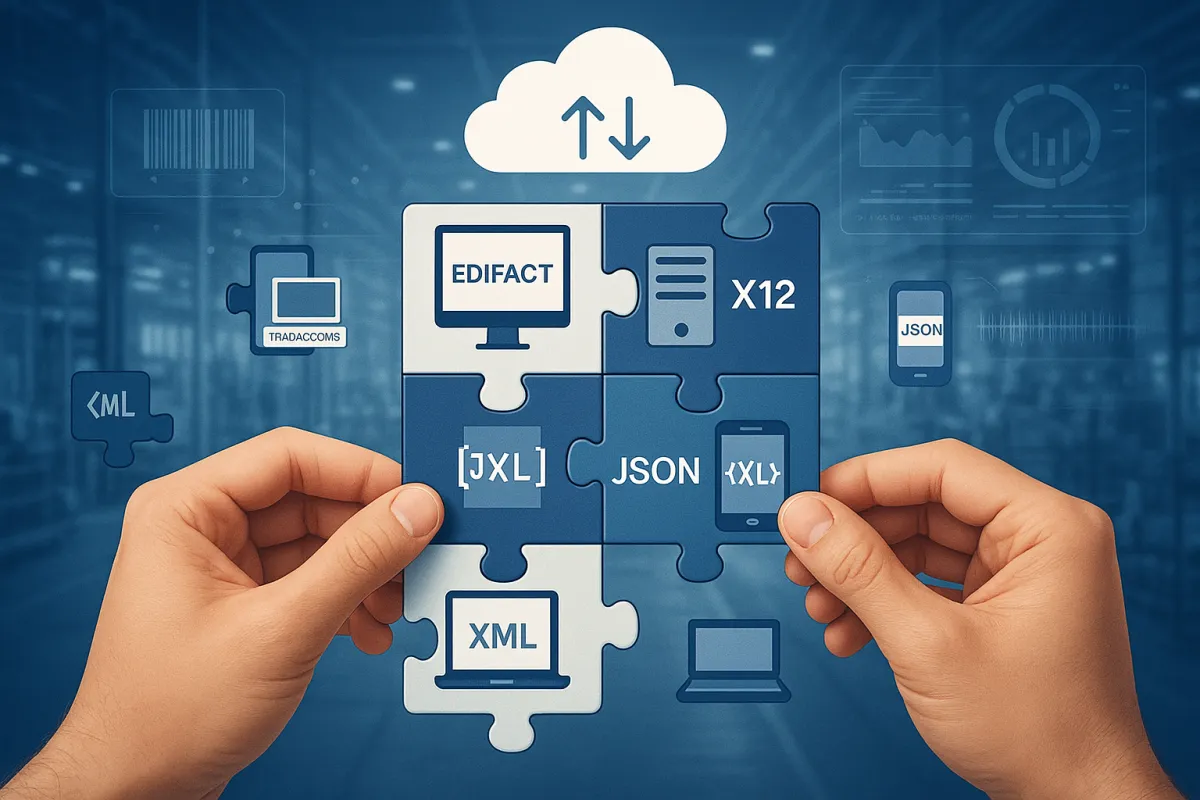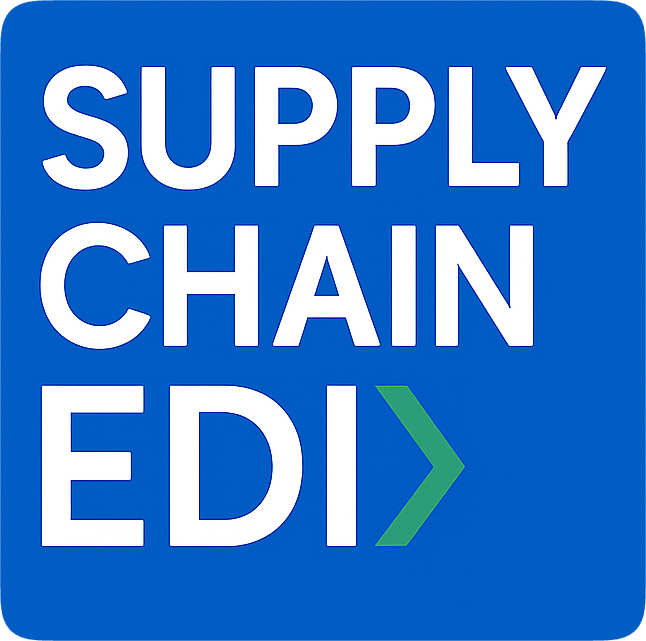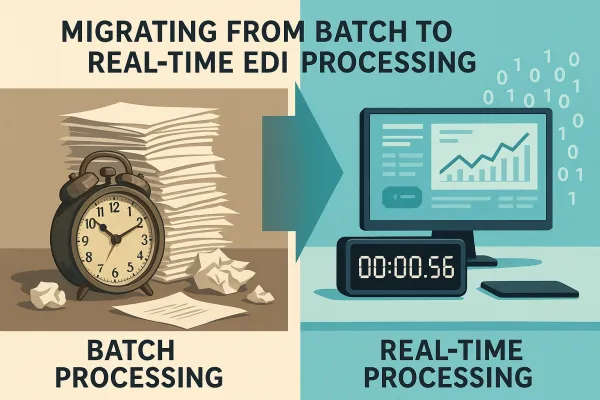Building the Business Case for Hybrid EDI-API Integration: Cost Justification and ROI Framework for 2025

Hybrid EDI-API integration costs money upfront, but so does maintaining separate systems that drain your budget year after year. Business Wire reports that 65% of organizations use APIs, while Global News Hire reports that 60% to 80% use EDIs, yet most companies struggle with the false choice between these technologies.
The business case for hybrid integration writes itself when you compare the total cost of ownership against the operational headaches of running parallel systems. Your CFO wants numbers. Here they are.
Why the EDI vs API Debate is Over (And Why Hybrid is Winning)
The conversation has shifted from "EDI or API?" to "How do we make them work together?" By 2021, this number rose to $8.38 trillion, as well as accounted for 76.5% of all digital sales. Furthermore, EDI grew year-over-year by 8.3% in 2021 while the market is expected to increase from $2.31 billion in 2025 to $5.30 billion by 2032, with a compound annual growth rate (CAGR) of 12.6% throughout the forecast period. Meanwhile, API adoption continues accelerating as companies need real-time data exchange alongside traditional batch processing.
Your legacy trading partners won't abandon EDI overnight. Your new cloud applications demand API connectivity. Fighting this reality costs more than embracing it.
Here's why the API vs. EDI debate is losing its luster in 2024 and why a centralized integration platform that takes an "outside-in" approach will improve your ecosystem onboarding processes. Smart companies are discovering that platforms supporting both protocols eliminate the forced choice between operational stability and modern agility.
The Hidden Costs of Maintaining Separate Systems
Running EDI and API systems separately creates expensive complexity that impacts your entire operation. You're paying for duplicate infrastructure, training separate teams on different technologies, and managing integration points that multiply your failure risks.
According to IBM, the cost of processing an invoice with an EDI system is roughly £2.70 compared to about £24 when processing manually. But what happens when your EDI coordinator needs API expertise? Or when your API developer encounters EDI mapping requirements? Cross-training costs skyrocket, and EDI professionals are in high demand but there is a limited supply.
Consider these multiplying costs: separate monitoring tools, different vendor relationships, duplicate security protocols, and parallel troubleshooting processes. Every additional system adds administrative overhead that your unified hybrid approach eliminates.
The Financial Framework: Calculating Your Hybrid Integration ROI
Real ROI calculations require looking beyond setup costs to operational efficiency gains. The TEI study found that full-service EDI from SPS provided Peter Grimm with an ROI of 372 percent and a payback period of fewer than three months, but hybrid approaches deliver even stronger returns by unifying previously separate processes.
Start with these proven metrics from successful implementations:
Learn how Formica boosted their B2B transaction volumes by nearly 40% with an improved EDI platform. See how Li & Fung handles 1.5 million transactions an hour by standardizing workflows with EDI. Discover how Saint-Gobain saved 92% costs per line order by automating manual data entry with EDI processes.
Your ROI calculation should include transaction processing improvements, reduced manual intervention, faster partner onboarding, and consolidated vendor management. Organizations report up to 90% savings in processing costs per transaction when automation replaces manual processes across both EDI and API workflows.
Transport management platforms like Cargoson, MercuryGate, and Descartes demonstrate how hybrid connectivity supports multiple carrier protocols simultaneously, reducing integration costs while expanding operational flexibility.
Beyond Cost Savings: Strategic Value Creation
Hybrid integration creates revenue opportunities that single-protocol approaches can't match. Real-time inventory visibility through APIs enhances traditional EDI batch processing, enabling dynamic scheduling adjustments that improve customer satisfaction and reduce inventory carrying costs.
Your sales team can respond to customer inquiries faster when API calls provide instant stock levels while EDI maintains your established trading partner relationships. This operational agility translates directly to competitive advantage.
New market entry becomes simpler when your platform supports whatever integration method potential partners prefer. You're not losing deals because you can't accommodate their technical requirements.
Implementation Strategy: From Assessment to Deployment
Begin with a comprehensive enterprise needs assessment that evaluates your current system diversity and supply chain agility requirements. Document which trading partners use EDI standards, which require API connectivity, and where real-time versus batch processing creates the most business value.
Your assessment criteria should include data volume requirements, regulatory compliance needs, partner technical capabilities, and internal IT resources. APIs are hailed for their real-time connectivity advantages, as they are able to connect with partner and SaaS applications quickly and efficiently, while EDI provides the structured, compliant data exchange that regulated industries require.
Modern platforms like Cleo, IBM Sterling, TrueCommerce, and Cargoson offer unified approaches that let transactional APIs enable legacy EDI systems to link with modern REST APIs while safeguarding existing investments.
EDI and web service APIs can work together seamlessly and complement each other on one platform. That's why APIs are often part of a B2B integration strategy, adding real-time access to all sorts of B2B transactions.
Avoiding Common Pitfalls in Hybrid Deployments
Hybrid implementation requires navigating the complexity of different data formats, communication protocols, and workflow patterns. Don't underestimate the configuration challenges when APIs expecting JSON responses need to interact with EDI systems processing X12 or EDIFACT formats.
However, hybrid EDI and API implementations have a human element to them – which brings up the divide between today's generation and the next generation. The people who built legacy EDI systems are retiring. It's the education of the workforce's next generation that will keep things up and running.
Cross-training becomes essential for success. Your team needs understanding of both EDI mapping concepts and API endpoint management. At the same time, this new generation can educate these EDI experts on the value of bringing APIs into the fold. This cross-training can feed into a true API EDI integration that yields a positive ROI now and for the future.
Complex configurations make hybrid approaches unsuitable for smaller businesses without dedicated integration resources. Evaluate whether your organization has the technical depth to manage multi-protocol environments effectively.
Making the Business Case: Templates and Best Practices
Your executive summary needs to position hybrid integration as a strategic enabler, not just a technical upgrade. Focus on business outcomes: faster partner onboarding, reduced operational risk, and improved scalability for growth initiatives.
Present your cost-benefit analysis with three-year projections that include implementation costs, ongoing maintenance savings, and productivity improvements. Onboard new trading partners more quickly, accelerating time to value and enabling full engagement 1.5 weeks sooner when unified platforms eliminate separate integration processes.
Address risk mitigation directly. A unified hybrid solution that combines the power of EDI services and API functionality eliminates complexity and builds supply chain resiliency—for you and your trading partners. Single points of failure decrease when both protocols run on consolidated infrastructure.
Position experienced providers like Comarch, IBM Sterling, and Cargoson as essential partners for confident deployment. Cloud-based solutions offer cost-effective implementation paths with professional support that reduces internal resource requirements.
Future-Proofing Your Investment
Scalability separates successful hybrid deployments from expensive mistakes. Your chosen platform must handle increasing data volumes without performance degradation while supporting whatever new protocols emerge.
Avoid one-size-fits-all approaches that force compromises between EDI compliance and API flexibility. Real-time (API) and file-based batch (EDI) processes complement each other seamlessly when these processes are running on the same platform and can interact with each other.
Transport management systems exemplify this need perfectly. Carriers require EDI for compliance documentation while shippers demand APIs for real-time visibility into shipment status. Platforms that support both protocols natively eliminate the technical debt that accumulates when separate systems require constant synchronization.
Your investment pays long-term dividends when hybrid architecture adapts to changing business requirements without wholesale platform replacements. Choose solutions that treat protocol diversity as a feature, not a problem to solve.





